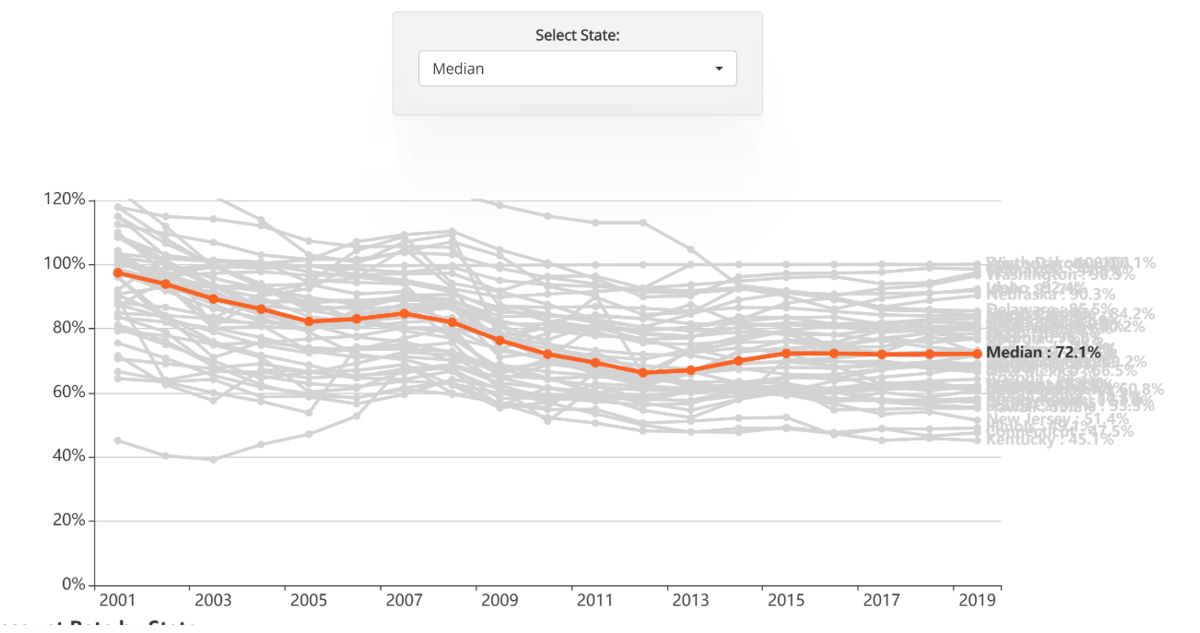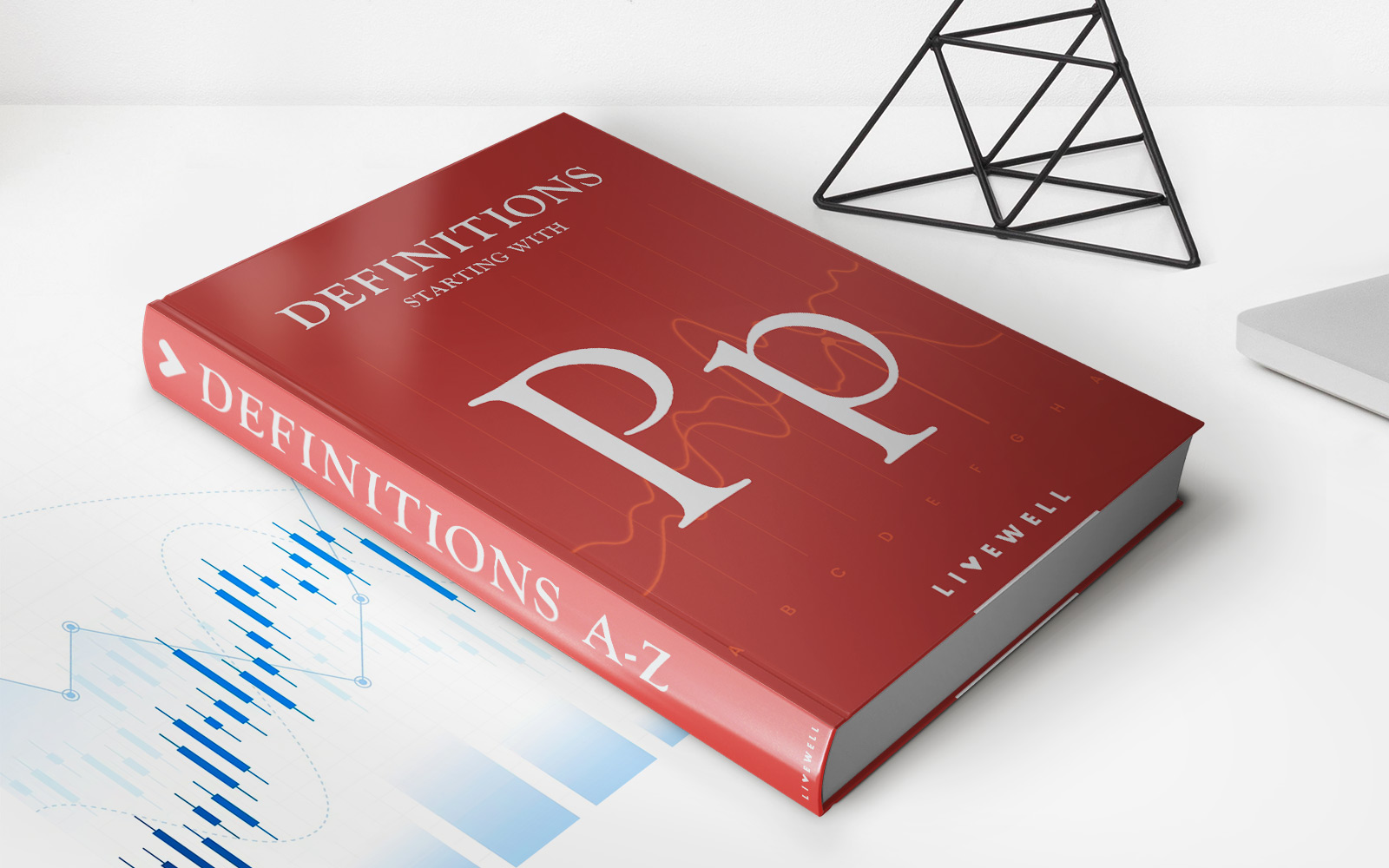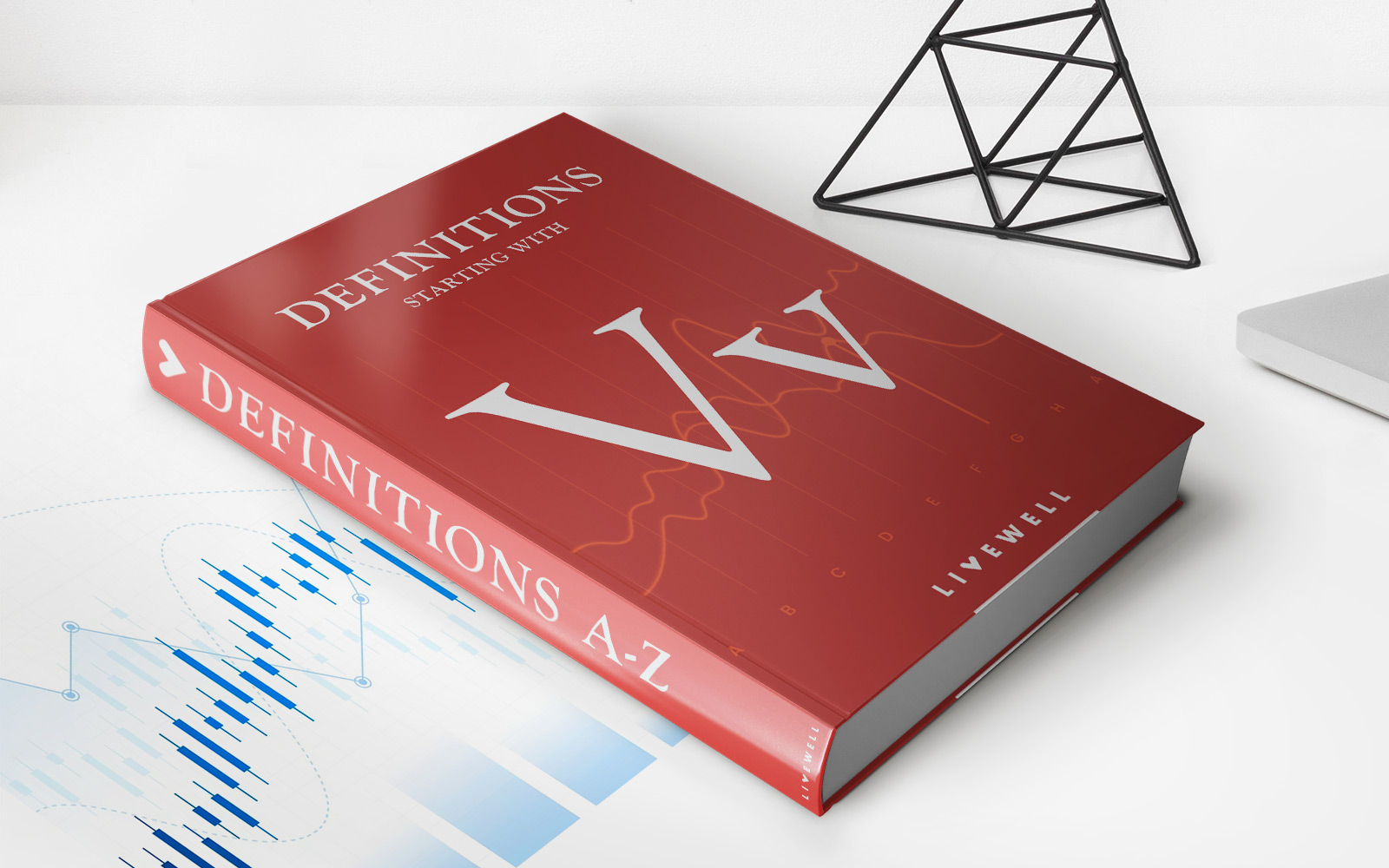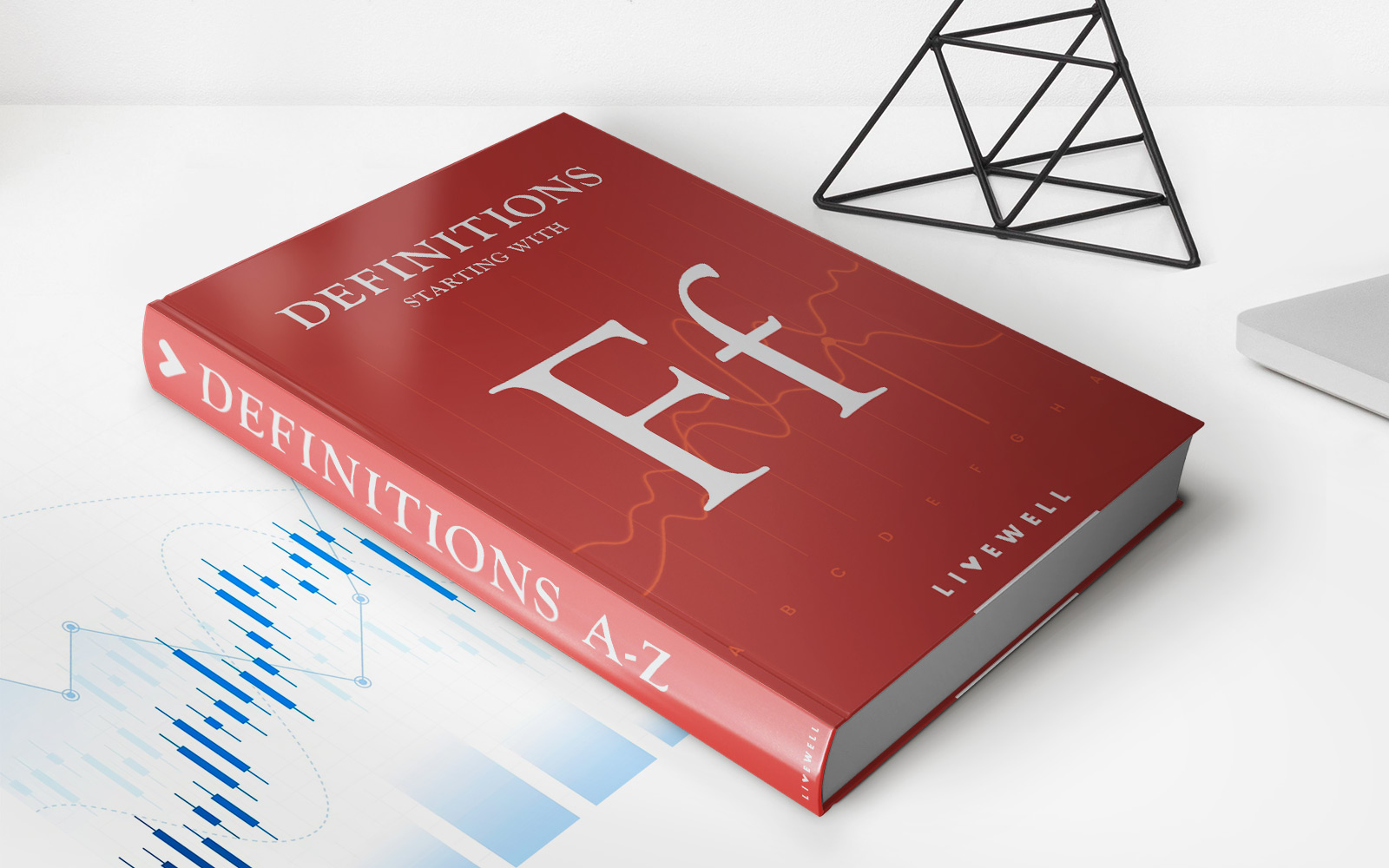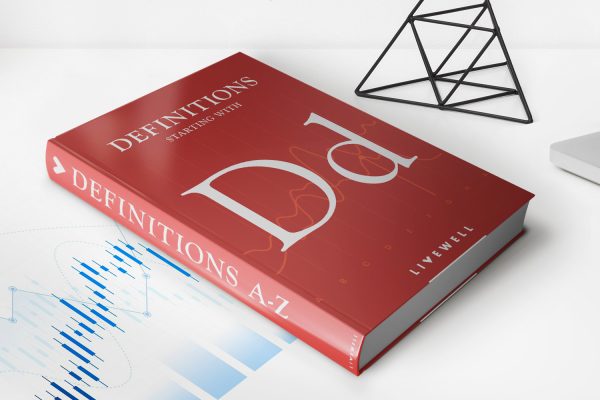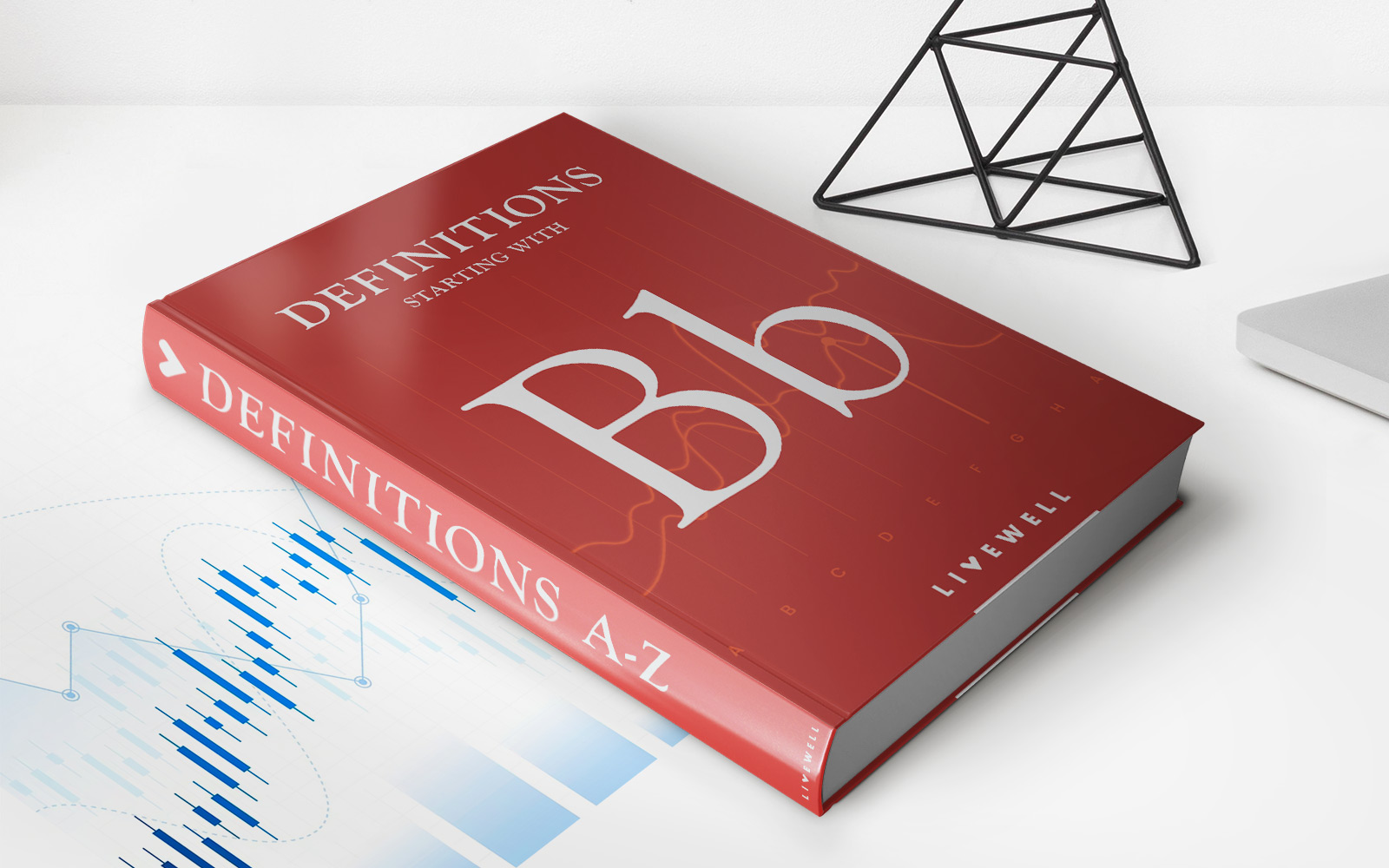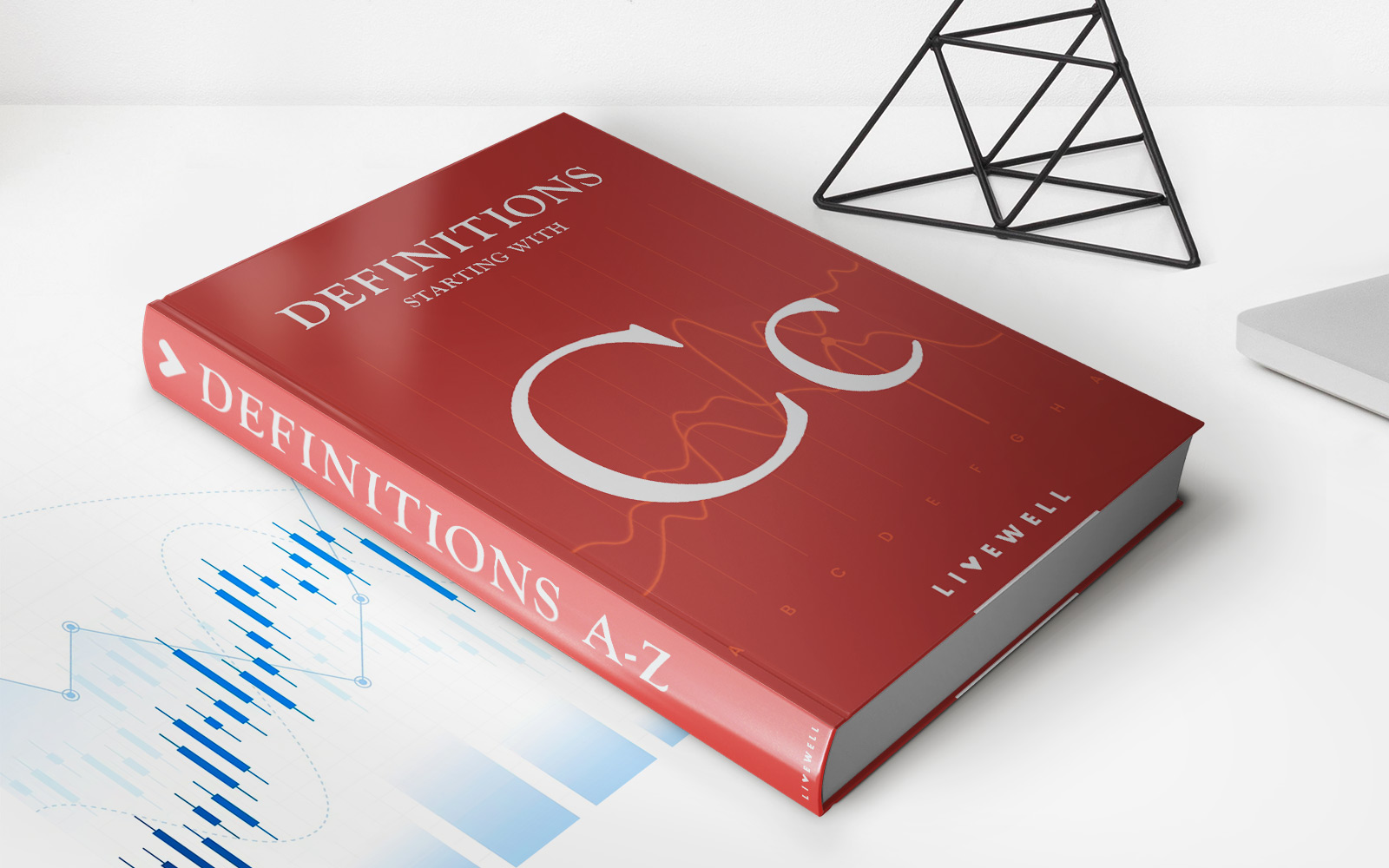

Finance
How Does A Pension Fund Act As An Investor
Published: November 27, 2023
Learn how a pension fund acts as an investor in the world of finance. Understand its role, benefits, and impact on economic growth.
(Many of the links in this article redirect to a specific reviewed product. Your purchase of these products through affiliate links helps to generate commission for LiveWell, at no extra cost. Learn more)
Table of Contents
- Introduction
- Definition of a Pension Fund
- Purpose of a Pension Fund
- Role of a Pension Fund as an Investor
- Types of Investments Made by Pension Funds
- Benefits and Risks of Pension Fund Investments
- Regulation and Oversight of Pension Fund Investments
- Pension Fund Investment Strategies
- Factors Influencing Pension Fund Investment Decisions
- Case Study: How a Pension Fund Invests in Equities
- Conclusion
Introduction
A pension fund is a financial institution that manages and invests funds on behalf of individuals or organizations to provide income during retirement. It acts as a crucial part of the retirement ecosystem, ensuring that individuals can maintain their standard of living even after they have stopped working.
Retirement planning is an essential aspect of personal finance, and pension funds play a significant role in this process. They allow individuals to accumulate savings over their working years, which are then invested to generate returns. These returns are used to provide a source of income in retirement, supplementing other sources such as government benefits and personal savings.
Managing and investing pension funds requires expertise in finance and a deep understanding of the complexities of the financial markets. Pension fund managers are responsible for making informed investment decisions to optimize returns while managing risks.
In this article, we will explore how pension funds act as investors by examining their definition, purpose, role, types of investments made, benefits and risks, regulation and oversight, investment strategies, and factors influencing investment decisions. We will also include a case study to illustrate how pension funds invest in equities.
Understanding how pension funds operate as investors is essential not only for those who are relying on them for their retirement nest egg but also for anyone interested in the workings of the financial industry and its impact on the economy.
Definition of a Pension Fund
A pension fund is a type of investment fund that manages and invests funds contributed by individuals or employers for the purpose of providing retirement benefits. It is designed to accumulate and grow savings over time, which are then used to pay out a regular income to individuals once they reach retirement age.
Pension funds are typically established and managed by corporations, government entities, or labor unions. They can also be privately managed for individuals who choose to invest in personal pension plans.
The funds in a pension fund are typically pooled together from contributions made by both employees and employers. These contributions are invested in various financial instruments such as stocks, bonds, real estate, and other assets in order to generate returns. The earnings and capital appreciation from these investments are used to provide retirement benefits to the contributors.
There are two main types of pension funds: defined benefit (DB) and defined contribution (DC) plans. In a DB plan, the retirement benefit is predetermined based on factors such as salary, years of service, and age at retirement. The responsibility for managing the investments and ensuring that the promised benefits are paid out lies with the pension fund. DC plans, on the other hand, shift the investment and longevity risk to the individuals. The amount of retirement benefit in a DC plan depends on the performance of the investments chosen by the individual.
Pension funds are subject to strict regulations and oversight to protect the interests of the contributors. The funds are typically held in trust, and the pension fund managers have a fiduciary duty to act in the best interests of the beneficiaries.
Overall, a pension fund serves as a vehicle for individuals to accumulate savings and invest them with the goal of providing a sustainable income stream during retirement. It plays a vital role in ensuring financial security for retirees and promoting long-term economic stability.
Purpose of a Pension Fund
The purpose of a pension fund is to provide individuals with a reliable source of income during their retirement years. It serves as a long-term savings and investment vehicle, allowing individuals to accumulate funds throughout their working lives in order to sustain their quality of life after they stop working.
One of the key purposes of a pension fund is to address the challenge of retirement financing. With increasing life expectancies and the shifting landscape of retirement benefits, individuals cannot solely rely on government-sponsored pension programs or rely on personal savings to meet their financial needs in retirement. Pension funds bridge this gap by offering a structured and proactive approach to retirement planning.
By pooling together the contributions of multiple individuals, pension funds have the advantage of economies of scale when it comes to investment opportunities. They can access a diverse range of asset classes and investment strategies that may not be available or feasible for individual investors. This enables them to potentially generate higher returns and mitigate risk through diversification.
Furthermore, pension funds provide a disciplined savings mechanism. Employees and employers contribute a portion of their income to the fund on a regular basis, ensuring that retirement savings are consistently accumulated. This helps individuals build a nest egg over time without relying solely on their own discretion or discipline.
Another important purpose of pension funds is to provide retirement income that is predictable and stable. Through prudent investment management, pension funds aim to generate consistent returns that can be used to pay out regular retirement benefits to plan participants. This provides retirees with a reliable income stream, reducing the risk of running out of money or facing financial challenges later in life.
Pension funds also contribute to the overall financial stability of the economy. By investing in various industries and supporting capital markets, pension funds play a vital role in mobilizing capital and stimulating economic growth. They provide a stable source of long-term funding for businesses, infrastructure projects, and other initiatives that drive economic development.
Overall, the purpose of a pension fund is to ensure that individuals can enjoy a comfortable and financially secure retirement. By offering a structured savings and investment vehicle, pension funds provide individuals with the opportunity to accumulate wealth and generate a sustainable income in their golden years.
Role of a Pension Fund as an Investor
A pension fund plays a significant role as an investor in the financial markets. It is responsible for managing and investing the accumulated funds of its contributors with the aim of generating returns to fund retirement benefits. The role of a pension fund as an investor can be summarized through the following key points:
Capital Allocation: One of the primary roles of a pension fund is to allocate capital effectively across a range of investment options. It assesses various asset classes such as stocks, bonds, real estate, private equity, and alternative investments to determine the optimal mix based on risk-return objectives. By carefully diversifying the investment portfolio, pension funds aim to balance growth potential with risk mitigation.
Risk Management: Pension funds have a fiduciary duty to manage the funds in a prudent and responsible manner. As investors, they assess and manage risks associated with different investment options. This involves evaluating market risks, credit risks, liquidity risks, and other factors that could impact the value and performance of the investments. Effective risk management helps safeguard the long-term financial stability of the pension fund.
Long-Term Investing: Pension funds have a long-term investment horizon. Since their purpose is to provide retirement benefits that can span several decades, they focus on strategies that generate sustainable returns over the long run. This allows them to take advantage of compounding interest and ride out short-term market fluctuations. By investing for the long term, pension funds contribute to the stability and growth of the economy.
Market Participation: Pension funds actively participate in the financial markets by buying and selling securities. Through their investments, they provide liquidity to the market and contribute to price discovery. The size and influence of pension funds on the markets make them key players in shaping investment trends and impacting market dynamics.
Social Responsibility: As significant institutional investors, pension funds are increasingly incorporating environmental, social, and governance (ESG) factors into their investment decisions. They consider sustainability, ethical practices, and corporate governance when selecting investments. By incorporating ESG considerations, pension funds play a role in promoting responsible investing and influencing positive change.
Stewardship and Proxy Voting: Pension funds often take an active role in exercising their shareholder rights by engaging with companies in their investment portfolios. This includes voting on corporate resolutions, participating in shareholder meetings, and advocating for sound governance practices. By acting as responsible stewards of their investment holdings, pension funds contribute to improving corporate governance and fostering long-term value creation.
Overall, the role of a pension fund as an investor is multifaceted. It involves capital allocation, risk management, long-term investing, market participation, social responsibility, and stewardship. By fulfilling these roles, pension funds aim to generate sustainable returns that can fund retirement benefits while contributing to the stability and growth of the financial markets and the broader economy.
Types of Investments Made by Pension Funds
Pension funds have a wide range of investment options available to them, allowing them to diversify their portfolios and optimize returns while managing risk. The specific types of investments made by pension funds can vary depending on factors such as their risk tolerance, investment objectives, and regulatory requirements. Here are some common types of investments made by pension funds:
- Equities: Pension funds often invest in publicly traded stocks, both domestic and international. Equities offer the potential for long-term growth and capital appreciation. Pension funds may invest in a broad range of industries and companies of various sizes to diversify their equity holdings and capture market opportunities.
- Bonds: Pension funds invest in fixed-income securities such as government bonds, corporate bonds, and municipal bonds. Bonds provide regular interest payments and return the principal amount at maturity. They are generally considered less risky than equities and offer stable income streams.
- Real Estate: Pension funds invest in commercial properties, residential properties, and real estate investment trusts (REITs). Real estate investments provide the potential for income through rental payments and capital appreciation. They offer diversification benefits and protection against inflation.
- Alternative Investments: Pension funds also allocate a portion of their portfolios to alternative investments such as private equity, hedge funds, infrastructure, commodities, and venture capital. These investments offer potential returns that are less correlated with traditional asset classes and can enhance diversification and risk-adjusted returns.
- Infrastructure: Pension funds make investments in infrastructure projects such as toll roads, airports, ports, and energy facilities. Infrastructure investments provide stable cash flows, inflation protection, and potential long-term capital appreciation. They are often seen as long-term, low-risk investments with predictable cash flow streams.
- Private Equity: Pension funds invest in privately held companies with high growth potential. Private equity investments can include leveraged buyouts, venture capital, and growth equity. These investments offer the potential for significant returns but are typically illiquid and involve higher risk compared to other asset classes.
It’s important to note that the specific allocation to each investment type can vary across pension funds based on their investment policies, risk tolerance, and market outlook. Some pension funds may have strict regulations or guidelines regarding the maximum exposure to certain asset classes.
By diversifying their investments across different asset classes, pension funds aim to achieve a balanced portfolio that can generate sustainable returns while managing risk. The allocation to different investment types is carefully considered to optimize the risk-return profile and meet the long-term financial obligations of the pension fund beneficiaries.
Benefits and Risks of Pension Fund Investments
Pension fund investments offer various benefits and opportunities for individuals and organizations to grow their retirement savings. However, like any investment, there are also risks involved. It is important to understand both the benefits and risks associated with pension fund investments. Here are some key points to consider:
Benefits of Pension Fund Investments:
- Long-Term Growth: Pension funds have a long investment horizon, allowing them to take advantage of compounding returns over time. This can result in significant growth in retirement savings, helping individuals achieve their retirement goals.
- Diversification: Pension funds allocate investments across various asset classes, such as equities, bonds, real estate, and alternative investments. This diversification spreads the risk and reduces the impact of any single investment’s performance on the overall portfolio. It helps smooth out volatility and potentially improves returns.
- Professional Management: Pension funds are managed by experienced investment professionals who have the expertise and knowledge to make informed investment decisions. They conduct rigorous research, analysis, and due diligence to select suitable investments, helping to optimize returns while managing risk.
- Economies of Scale: Pension funds pool together contributions from multiple individuals, which allows them to access investment opportunities that may not be available to individual investors. They can negotiate lower fees, access institutional-quality investments, and benefit from the efficiencies of managing larger investment portfolios.
- Inflation Protection: Pension funds often invest in assets that can provide a hedge against inflation, such as real estate and infrastructure projects. These investments have the potential to generate returns that keep pace with or exceed inflation, preserving the purchasing power of retirement savings over time.
Risks of Pension Fund Investments:
- Market Volatility: Pension funds are exposed to market fluctuations, and the value of their investments can go up or down. Changes in interest rates, economic conditions, geopolitical events, and investor sentiment can impact the performance of the investments held by pension funds.
- Liquidity Risk: Some investments held by pension funds, such as real estate and private equity, can be less liquid compared to publicly traded stocks and bonds. In times of financial stress or when quick access to cash is needed, it may be difficult to sell these illiquid assets and generate immediate cash flow.
- Regulatory Changes: Pension funds are subject to regulatory oversight and changing regulations can impact their investment strategies. Changes in tax laws, retirement policies, or investment restrictions may require adjustments to the fund’s investment portfolio, potentially affecting investment returns.
- Investment Performance: While professional management is a benefit, it does not guarantee positive investment performance. Pension funds are exposed to the risk of making poor investment decisions or experiencing underperformance relative to benchmarks or peers, which can impact the retirement benefits that can be provided.
- Demographic Risks: Pension funds face demographic risks, such as an aging population and increasing life expectancies. If the fund’s investment returns do not meet expected levels or if there are long-term increases in the number of retirees, there may be a strain on the fund’s ability to fulfill its retirement benefit obligations.
It is important for individuals and organizations to carefully assess and understand these benefits and risks associated with pension fund investments. By having a clear understanding of the potential rewards and challenges, one can make informed decisions and develop suitable strategies to meet retirement objectives.
Regulation and Oversight of Pension Fund Investments
Pension fund investments are subject to strict regulation and oversight to protect the interests of the contributors and ensure the long-term financial stability of the funds. The regulatory framework varies across countries, but the underlying objectives are often similar – to safeguard retirement savings and promote transparency. Here are some key aspects of the regulation and oversight of pension fund investments:
Government Regulations: Governments play a significant role in regulating and overseeing pension fund investments. They establish laws and regulations that govern the operation of pension funds, including the types of investments permitted, investment limits, disclosure requirements, and fiduciary responsibilities. These regulations aim to protect the interests of plan participants and ensure that pension funds fulfill their obligations.
Fiduciary Duty: Pension fund managers have a fiduciary duty to act in the best interests of the plan participants. This means that they must prioritize the long-term financial well-being of the fund, make informed and prudent investment decisions, and act with utmost loyalty and care. Breach of fiduciary duty can lead to legal consequences and financial penalties.
Disclosure and Reporting: Pension funds are required to provide regular and transparent reporting to their contributors and regulatory authorities. This includes disclosing information about the fund’s financial position, investment strategy, risk management practices, fees, and performance. The aim is to ensure that contributors have access to relevant information that allows them to evaluate the fund’s performance and make informed decisions.
Prudential Supervision: Regulatory authorities, such as central banks, financial services regulators, or pension regulatory bodies, are responsible for supervising pension funds to ensure compliance with regulations. They conduct regular audits, risk assessments, and inspections to assess the financial soundness, governance practices, and risk management capabilities of the funds. Prudential supervision helps protect the integrity and stability of the pension fund industry.
Investment Restrictions: Governments may impose certain investment restrictions on pension funds to manage risk and protect contributors. These restrictions can include limits on the allocation to specific asset classes, concentration limits, and restrictions on investing in high-risk or speculative investments. The goal is to ensure that pension funds maintain a prudent investment approach and avoid excessive risk-taking.
Pension Insurance: In some countries, there may be government-sponsored pension insurance programs that provide protection to pension fund participants in the event of fund insolvency or default. These insurance programs aim to provide a safety net for individuals and ensure that retirement benefits are not entirely lost due to unforeseen circumstances.
International Standards and Best Practices: Pension fund regulation and oversight often draw upon international standards and best practices. Organizations such as the International Organization of Pension Supervisors (IOPS) and the International Monetary Fund (IMF) provide guidelines and recommendations to enhance the governance, risk management, and investment practices of pension funds globally.
The regulation and oversight of pension fund investments are crucial for maintaining the integrity, stability, and sustainability of these funds. By establishing clear rules and enforcing compliance, regulators and oversight bodies aim to protect the retirement savings of individuals and uphold the public trust placed in pension funds.
Pension Fund Investment Strategies
Pension funds employ various investment strategies to achieve their long-term financial objectives and fulfill their obligations to plan participants. These strategies are designed to balance risk and return, diversify the portfolio, and generate sustainable income over time. Here are some common pension fund investment strategies:
Asset Allocation: Asset allocation is a key aspect of the investment strategy for pension funds. It involves determining the appropriate mix of different asset classes, such as equities, bonds, real estate, and alternative investments. The allocation is based on factors like risk tolerance, investment horizon, and market conditions. The goal is to create a diversified portfolio that can generate optimal long-term returns while managing risk.
Diversification: Diversification is a fundamental principle of pension fund investment strategies. By spreading investments across multiple asset classes, geographical regions, and sectors, diversification reduces the impact of any single investment on the overall portfolio. It helps mitigate risk and enhances the potential for stable returns, even in volatile market conditions.
Passive and Active Management: Pension funds can choose to passively manage their investments by replicating a specific market index, such as an equity index or bond index. This approach aims to capture the overall market return. Alternatively, pension funds may opt for active management, where fund managers make investment decisions based on research and analysis. Active management can potentially outperform the market but also involves higher costs.
Liability-Driven Investment (LDI): LDI is an investment strategy that focuses on matching the pension fund’s assets to its liabilities. It takes into account the fund’s obligations to pay future retirement benefits. LDI strategies aim to manage the interest rate and inflation risks associated with the liabilities by investing in fixed-income securities that closely match the duration and cash flow characteristics of the pension obligations.
ESG Integration: Pension funds are increasingly incorporating environmental, social, and governance (ESG) factors into their investment strategies. They consider sustainability, ethical practices, and corporate governance when selecting investments. Integrating ESG factors enables pension funds to pursue investment opportunities that align with their values and contribute to a more sustainable and responsible financial system.
Strategic Asset Allocation Rebalancing: Pension funds regularly review and rebalance their investment portfolios to maintain the desired asset allocation. Rebalancing involves buying or selling assets to restore the intended allocation. This strategy ensures that the portfolio remains aligned with the long-term investment objectives and risk appetite of the pension fund.
Risk Management: Pension funds place a strong emphasis on risk management. They employ various risk mitigation techniques, such as diversification, hedging, and risk monitoring tools, to identify, assess, and manage investment risks. Risk management strategies aim to protect the value of the portfolio and ensure the long-term financial stability of the pension fund.
Pension funds may combine these strategies to create a customized investment approach that suits the specific needs and objectives of the fund. The investment strategies are regularly reviewed and adjusted based on market conditions, regulatory requirements, and the fund’s investment performance. The goal is to generate sustainable returns and meet the retirement income needs of plan participants while prudently managing risk.
Factors Influencing Pension Fund Investment Decisions
Pension fund investment decisions are influenced by a multitude of factors that shape the fund’s investment strategy and portfolio composition. These factors are essential in determining the risk-return objectives, asset allocation, and investment options pursued by pension funds. Here are some key factors that influence pension fund investment decisions:
Risk Tolerance: The risk tolerance of the pension fund, which is often determined by its investment committee or board of trustees, plays a crucial role in shaping investment decisions. Funds with a higher risk tolerance may allocate a larger portion of their portfolio to higher-risk assets such as equities, while those with lower risk tolerance may lean towards more conservative investments such as bonds and fixed-income securities.
Investment Horizon: The investment horizon, or time frame, of a pension fund is another critical factor influencing investment decisions. Pension funds have long-term investment horizons, given that their objective is to meet retirement benefit obligations that can span several decades. This longer time horizon allows them to consider investments with higher growth potential, such as equities and alternative investments.
Market Conditions and Outlook: Pension funds closely monitor market conditions and macroeconomic trends. Factors such as interest rates, inflation expectations, GDP growth, and geopolitical events have an impact on investment decisions. Market analysis and forecasts play a significant role in determining the allocation among different asset classes and investment sectors.
Regulatory Constraints and Requirements: Pension funds operate within a regulatory framework that imposes certain constraints and requirements on their investment strategies. These regulations may include limits on investment allocations, asset class restrictions, and risk management guidelines. Funds must ensure compliance with these regulations while striving to achieve optimal risk-adjusted returns.
Liability Obligations: Pension funds have a responsibility to meet their future liability obligations, which are the retirement benefits owed to plan participants. The liability profile of the fund, such as the duration and size of the liabilities, significantly influences investment decisions. Many pension funds adopt liability-driven investment (LDI) strategies to align their assets with their liabilities, reducing the risk associated with interest rate changes and inflation.
Diversification and Risk Management: Pension funds employ diversification strategies to manage risk effectively. They consider factors such as correlation among different asset classes, industry exposure, and geographic diversification to ensure a balanced and resilient portfolio. Risk management tools, risk appetite frameworks, and stress testing models are also utilized to assess and mitigate investment risks.
Social and Environmental Considerations: Increasingly, pension funds take into account environmental, social, and governance (ESG) considerations when making investment decisions. ESG factors influence the selection of investments based on sustainability, ethical practices, and impact on society. Funds may integrate ESG analysis or incorporate responsible investment policies to align their investments with their values and stakeholder expectations.
Investment Costs and Fees: The costs and fees associated with different investment options can influence the selection of investment vehicles. Pension funds aim to minimize costs and seek competitive fee structures that align with the fund’s investment objectives and financial sustainability.
Asset Class Performance and Historical Data: Pension funds review historical performance data, both for individual asset classes and their overall investment portfolio. This analysis helps assess the risk and return characteristics of potential investments, enabling informed investment decisions based on past performance and expectations for the future.
External Manager Expertise and Recommendations: Many pension funds rely on external investment managers for specialized expertise and advice. Investment managers provide insights, research, and recommendations based on their analysis of market trends, investment opportunities, and risks. These recommendations influence investment decisions made by pension funds.
These factors, among others, shape the investment decisions made by pension funds. By considering these factors in a holistic manner, pension funds aim to prudently invest their assets to generate sustainable returns while fulfilling their fiduciary duty to plan participants.
Case Study: How a Pension Fund Invests in Equities
Let’s take a closer look at how a hypothetical pension fund invests in equities as part of its overall investment strategy. The pension fund’s investment committee has determined that equities can provide long-term growth potential and diversification benefits. Here are the key steps and considerations in their equity investment process:
Strategy Development: The pension fund’s investment committee, along with its investment consultant, develops an equity investment strategy that aligns with the fund’s risk-return objectives. They consider factors such as the fund’s risk tolerance, investment horizon, and regulatory constraints to establish guidelines for equity investments.
Asset Allocation: Based on the investment strategy, the committee determines the appropriate allocation to equities within the fund’s overall portfolio. This decision is influenced by factors such as the fund’s risk appetite, market conditions, and expected returns. They may set target allocations for different equity categories, such as domestic equities, international equities, and emerging market equities.
Manager Selection: The pension fund evaluates various equity investment managers, considering factors such as their track record, investment approach, investment style, and fees. The fund conducts due diligence and selects managers that align with its investment objectives. Multiple managers may be selected to provide diversification and access to various investment styles or market segments.
Portfolio Construction: The selected equity managers construct portfolios based on their investment philosophies and strategies. They perform in-depth research and analysis on individual companies, industry sectors, and macroeconomic factors to identify investment opportunities. Portfolio construction aims to create a blend of stocks that offer growth potential, value, and income generation.
Risk Management: The pension fund and its investment managers implement risk management measures to monitor and mitigate risk. They may set limits on individual stock weights, sector exposures, and overall portfolio risk. Risk management tools, such as stress testing and scenario analysis, are used to evaluate the potential impact of adverse market conditions on the equity portfolio.
Active Management: The pension fund may opt for active management of its equity investments, where the investment managers actively make buy and sell decisions based on their research and analysis. Active management aims to outperform the market by identifying mispriced stocks, taking advantage of market inefficiencies, and actively adjusting the portfolio based on changing market conditions.
Monitoring and Review: The pension fund continuously monitors the performance of its equity investments and reviews the investment managers’ adherence to the fund’s investment guidelines and objectives. Regular meetings with the investment managers are held to assess their performance, discuss investment strategies, and make any necessary adjustments to the portfolio or manager selection.
Reporting and Communication: The pension fund provides regular reports to its board of trustees, plan participants, and regulatory authorities, disclosing the performance and composition of the equity portfolio. This transparency and communication help stakeholders understand the fund’s equity investment activities and assess the fund’s overall performance.
By carefully selecting equity managers, actively managing the portfolio, and implementing risk management measures, the pension fund aims to generate returns from its equity investments while managing risk. The equity allocation within the fund’s overall portfolio provides diversification, growth potential, and income generation to contribute to the long-term financial stability and retirement benefits of plan participants.
Conclusion
Pension funds play a vital role in the retirement ecosystem, helping individuals and organizations accumulate savings and invest them to generate income during retirement. They act as sophisticated investors, managing funds on behalf of contributors and making informed investment decisions to meet long-term financial obligations.
Throughout this article, we explored various aspects of pension fund investments, including their definition, purpose, role as investors, types of investments made, benefits and risks, regulation and oversight, investment strategies, and factors influencing investment decisions. By delving into these topics, we gained a deeper understanding of the complexities and considerations involved in pension fund investment management.
Pension funds navigate a complex landscape of market dynamics, regulatory frameworks, and economic factors. Their investment decisions are guided by factors such as risk tolerance, investment horizon, market conditions, liability obligations, and government regulations. They employ diverse investment strategies, including asset allocation, diversification, LDI, and ESG integration, to optimize returns while managing risk.
While pension fund investments offer benefits such as long-term growth potential, diversification, and professional management, they also carry risks such as market volatility, liquidity risk, and regulatory changes. To mitigate these risks, pension funds implement risk management practices, engage in strategic asset allocation, and actively monitor their investments.
In conclusion, pension funds play a crucial role in ensuring individuals can maintain their standard of living during retirement. Through prudent investment management, they aim to generate sustainable returns and fulfill their fiduciary duty to plan participants. The rigorous regulation and oversight of pension fund investments protect the interests of contributors and promote transparency in the industry.
As individuals plan for retirement and organizations manage pension plans, it is important to understand the intricacies of pension fund investments. By recognizing the factors that shape investment decisions and the various strategies employed by pension funds, individuals can make informed decisions about their retirement savings, while organizations can fulfill their obligations to plan participants.



